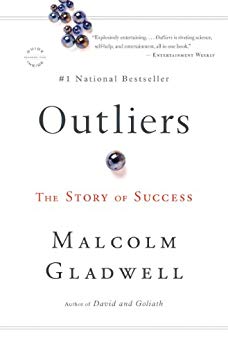

This article is an excerpt from the Shortform summary of "Outliers" by Malcolm Gladwell. Shortform has the world's best summaries of books you should be reading.
Like this article? Sign up for a free trial here .
What is the connection between IQ and success? Are people who score high on IQ tests more likely to be successful in life?
Although we tend to assume that high “analytical intelligence”—as measured by IQ tests—is a prerequisite for success, extraordinary success in life is often the result of “practical intelligence.” Moreover, external factors (nurture) are at least as important as innate ability (nature) in determining a person’s success.
To explore this argument, let’s examine the origins and impacts of each type of intelligence.
Analytical vs. Practical Intelligence
Analytical and practical intelligence are two of three types identified in psychologist Robert Sternberg’s model of intelligence, called the Triarchic Theory of Intelligence. The third type is creative intelligence, which entails thinking outside the box to come up with innovative solutions.
1. Analytical Intelligence
- Measured by IQ tests
- Good for solving intellectual puzzles
- Genetic and innate, at least in part
2. Practical Intelligence
- Not measured by IQ tests
- Also known as social savvy; enables you to accurately read other people and situations and adjust accordingly, in order to get what you want
- Learned rather than innate
The Limits of Analytical Intelligence
What is the connection between IQ and success? People with high IQs are typically lauded as geniuses—arguably the ultimate outliers. However, Gladwell argues that IQ only determines success up to a certain point. This is called the “threshold effect”: After meeting the threshold of “smart enough,” differences in achievement based on IQ tend to level out, and opportunity plays a larger role in determining your success. Specifically, he cites an IQ of 120 as the threshold where the importance of IQ drops off.
| The Importance—and Heritability—of Creativity Although Gladwell refers to the threshold effect in broader terms, in psychological research, the threshold theory refers to the relationship between intelligence and creativity. Even in the discussion of what makes a genius, researchers like Nancy Coover Andreasen, a neuroscientist who studies the “science of genius,” and other studies on the threshold effect tend to focus on the relationship between IQ—analytical intelligence—and creativity, because they draw a connection between creativity and genius (as in, creative genius). Gladwell does acknowledge the importance of creativity, as we’ll discuss next. However, while this does support his argument on the shortcomings of analytical intelligence alone, it does not support his larger emphasis on the limitations of innate ability, as research reveals that creativity is more genetic than learned. Rather, Gladwell returns to his focus on opportunities and external factors in the next section on practical intelligence. |
Divergent vs. Convergent Thinking
Once a person passes the threshold of “smart enough,” what other factors determine their success? Besides practical intelligence, which we’ll discuss later, Gladwell argues that it is divergent thinking, or the ability to consider multiple possibilities and think creatively. By contrast, convergent thinking is the type measured by IQ tests, which enables you to choose an answer from a list of possibilities.
(Shortform note: Although psychologist J.P. Guilford developed the concept of convergent and divergent thinking, his definition of divergent thinking closely parallels the description of creative intelligence in Robert Sternberg’s Triarchic Theory of Intelligence. As mentioned earlier in this section, Sternberg’s theory identifies three types of intelligence: analytical (good for solving intellectual puzzles), practical (for reading people and situations), and creative (for thinking outside the box).)
What is divergent thinking? Gladwell writes that a test of divergent thinking might ask participants how many shapes they can make with a pile of blocks.
- A convergent thinker is more likely to provide limited, predictable solutions, like building a tower or a rectangular structure.
- A divergent thinker is more innovative, possibly making rounded shapes horizontally (one-block high) rather than stacking them vertically.
Gladwell asserts that the convergent thinker might have a higher IQ, but the divergent thinker demonstrates invaluable creativity beyond the functional—they’re more likely of the two to win a Nobel Prize or found a revolutionary business.
(Shortform note: In a business context, divergent thinking is key to innovating and adapting to change. You can incorporate divergent thinking into your organization by ensuring that your business model is adaptable to changing market demands, soliciting ideas from a broad range of team members, constantly learning, and taking calculated risks.)
Example: Terman and His Little Geniuses
One of the studies that Gladwell references to illustrate the limits of analytical intelligence is Stanford psychologist Lewis Terman’s “Genetic Studies of Genius.” After WWI, Terman began a long-term study following a group of about 1,500 extraordinarily intelligent children, whose IQs averaged 140. He called them “Termites.” Terman believed that no personal attribute was more important than IQ, and he intended to prove its correlation with success in adulthood.
According to Gladwell, Terman spent his life tracking the Termites’ physical, academic, and psychological development. He was convinced that his Termites would be the great leaders of their generation. However, he found that, while the Termites had done fairly well for themselves, they hadn’t been the true outliers that he had anticipated. The Termites’ intelligence allowed them to be moderately successful in life, but their intelligence was no better at predicting outlier status than their family background—in fact, one sociologist demonstrated that if Terman had randomly selected kids from the same family backgrounds as his Termites, without selecting for IQ, the random group would probably have been just as successful as the high-IQ group.
| Criticism and Legacy of Terman’s Study As a gifted child himself, Terman’s motivation in his “Genetic Studies of Genius” was to change a common notion at the time that exceptionally smart children were feeble, socially awkward, and generally ill-adjusted. From his own experience, he developed an interest in high intelligence: He adapted Alfred Binet’s intelligence test to develop the Stanford-Binet Intelligence Scales, which is still used to measure IQ. (Terman also used the IQ test in his advocacy for eugenics.) However, critics point to several issues that compromise the validity of Terman’s study: – The Termites were not diverse. The vast majority were white (the total number of Black, Japanese-American, and American-Indian participants was nine), middle-class, urban, Californians. – During the study, Terman intervened to improve the Termites’ odds of success, undermining the study’s results. He wrote letters of recommendation and used his influence to help some get admitted to Stanford. – The circumstances of the time impacted the Termites’ opportunities. The study began in 1921, so the Depression that began at the end of that decade and World War II in the 1940s likely limited many participants’ abilities to attend college. Additionally, nearly half of the women in the study did not pursue careers, which was more of a cultural norm during that era. Despite these issues, Terman’s study did help change public opinion of “gifted children”—and perhaps contributed to society’s current overvaluing of intelligence that Gladwell disputes. |
The Opportunity of Practical Intelligence
Whereas there are limitations to the impact of analytical intelligence on a person’s success, as mentioned, Gladwell argues that practical intelligence is essential for outlier-level success. This is where he returns to the theme of emphasizing the importance of external factors: While analytical intelligence is largely innate, practical intelligence is learned.
Gladwell asserts that practical intelligence is largely cultivated through family. Specifically, a family’s wealth has a large impact on a child’s outcomes—not only because money affords the child opportunities to attend good schools and benefit from coaches and tutors, but because the family’s wealth correlates with parenting practices that instill the child with more or less practical intelligence. As evidence, he cites a study by sociologist Annette Lareau, who followed the families of 12 third-graders and found two distinct parenting philosophies divided along class, rather than racial or cultural, lines.
Middle-Class Parents Take a Hands-On Approach
Gladwell explains that Lareau’s research revealed that wealthier parents took an active role in their children’s education and development. These parents:
- Were on the lookout for children’s interests and helped them develop those interests into talents
- Explained their decisions rather than making commands
- Expected their children to have opinions and negotiate
- Advocated on their children’s behalf, modeling how to stand up to authority figures like teachers and doctors
Lareau called this approach “concerted cultivation,” and it teaches children to:
- Adapt to the expectations of various people, situations, and experiences
- Develop teamwork skills through extracurricular sports
- Be comfortable interacting with adults
- Self-advocate
| The Evolution From Cultivating to Constraining Since Lareau’s assessment, concerted cultivation has come to be categorized as a form of “intensive parenting,” which has evolved to encompass “helicopter parenting” (incessantly hovering over children), “snowplow parenting” (clearing obstacles from children’s path), and “drone parenting” (technology-assisted helicopter parenting). Paradoxically, in contrast to concerted cultivation, research shows that these more-intensive variants actually produce children who are less competent, confident, mature, independent, and responsible than their peers. Although all of these forms of intensive parenting involve signing children up for enriching extracurriculars, including children in family discussions and debates, and engaging in negotiations with children. However, the difference seems to be that the concerted cultivation that Lareau describes involves not only advocating for children, but also pushing them to take an active role in their own self-advocacy, which helps the children develop the skills and confidence that are key to navigating the world. By contrast, helicopter, snowplow, and drone parenting are characterized by parents’ efforts to prevent their children from experiencing failures and frustrations, which prevents them from learning valuable lessons and stunts the development of their competence and confidence. |
Working-Class Parents Take a Hands-Off Approach
By contrast, Gladwell says, Lareau revealed that working-class parents felt responsible for caring for their children, but they left them to develop naturally, on their own. Their children didn’t have play time that was orchestrated by their parents—instead, they played outside and made up games with their siblings and neighbors. These parents:
- Considered their children’s interests as facets of their personality rather than sources of potential talent
- Tended to command rather than explain
- Did not expect their children to express opinions that were counter to an adult’s
- Were passive around authority figures, teaching their children to be passive as well
Lareau called this strategy “accomplishment of natural growth,” and it leads to children who are:
- Better behaved and don’t complain as much
- Creative, due to time spent playing imaginative games with peers
- More independent
| A Decline in Accomplishment of Natural Growth Evidence suggests that, since Lareau published her findings, some aspects of the accomplishment of natural growth strategy—and their associated benefits—have declined in practice. First, some experts suggest that intensive parenting (closely related to concerted cultivation) is increasingly becoming the norm at every socioeconomic level. One possible explanation is that parents are getting more involved out of anxiety about rising competition in college admissions, greater necessity of a college degree in the changing job market, and widening income inequality. However, the ways in which parents are intervening is largely undermining children’s independence and sense of self-efficacy. Second, the broader availability of technology means that most children are spending more time in front of screens—televisions, computers, and mobile devices—and less time outside. Furthermore, research shows that low-income children and teens average significantly more screen time than their middle-class and affluent peers. Being more sedentary and having less unstructured play makes children more physically unhealthy, and it inhibits their development of critical thinking and social skills. As a result, they likely miss out on the benefit of creativity that Lareau notes among working-class children. |
Comparing the Approaches
Gladwell writes that neither parenting style is objectively better, but concerted cultivation fosters the growth of practical intelligence, the savvy to know how to ask for what you want and get it. Through seeing their parents speak up to authorities and learning how to advocate for themselves, middle-class children grow up feeling entitled to pursue their desires. While we tend to think of entitlement as a bad thing, it may be a foundational pillar of success—you won’t get something if you don’t ask (and even fight) for it.
(Of Lewis Terman’s Termites, Gladwell reports that those from the wealthiest families became the highest-achieving adults. This suggests that their success was due in part to the practical intelligence they learned from the way they were raised.)
On the other hand, Lareau found that kids from working-class and poor families didn’t know how to manipulate an environment to get what they wanted. They never made special requests of teachers or advocated for themselves. They weren’t comfortable around adults, and they even felt distrust.
| There are some criticisms of Lareau’s research, which she published in a book titled Unequal Childhoods: Some critics noted the small sample size (she studied 88 families but discussed only 12 in the book), and others have pointed out that race has a larger impact on parenting philosophy than Lareau acknowledges. However, these critiques don’t significantly undermine Gladwell’s argument, because: – Other research supports Lareau’s assertion that concerted cultivation is positively correlated with academic achievement. – Although a child’s race is genetic, its impact on the child’s outcomes is based on the external factors that exist because of race, rather than an inherent correlation between race and innate ability. In this way, being born into a family of a certain race or a certain class both lead to external factors that help or hinder success. |
Case Study: The Stories of Two Geniuses
To illustrate how practical intelligence—or the lack thereof—impacts success, Gladwell tells the contrasting stories of two geniuses: One spent most of his life as a bouncer in a bar, and the other was the father of the atomic bomb. Gladwell attributes the dramatic difference in these two geniuses’ trajectories to their family backgrounds and levels of practical intelligence.
The first genius, Christopher Langan, has an IQ of 195 (for comparison, Einstein’s was 150). He could read at age 3, got a perfect score on the SAT, and loved to learn. However, he grew up in poverty with a physically abusive stepfather. He developed a distrust of authority and a belief that being independent was the only way to get through life. As a result, Gladwell argues that Langan failed to develop the practical intelligence—and, specifically, the communication and negotiation skills—that would have helped him overcome a series of setbacks that led him to drop out of college (twice).
- Langan lost his full-ride scholarship because his mother didn’t sign the financial aid forms. Gladwell asserts that if Langan knew how to negotiate with authority figures, he likely would have been able to rectify the situation.
- Langan asked his professor why he was teaching calculus in such a trivial way. Langan had genuinely wanted to have a conversation with another math lover, but because of his poor communication skills, he offended the professor instead.
- When Langan’s car needed repairs he couldn’t afford, the school denied his request to rearrange his class schedule so that he could carpool with a neighbor. Instead of pushing the issue, Langan simply dropped out of school.
The second genius that Gladwell introduces, Robert Oppenheimer, was a theoretical physicist and father of the atomic bomb. Like Langan, Oppenheimer’s intellectual prowess was evident as a child. Unlike Langan, Oppenheimer’s family was well-off and cultivated his practical intelligence from a young age: His parents taught him to interact with adults on equal footing, instilling in him a sense of entitlement. His father was a model of how to negotiate to get what you want, having worked his way up the ranks in the business world. Gladwell credits Oppenheimer’s practical intelligence for getting him through potentially grave setbacks in his life and career.
- As a doctoral student, Oppenheimer tried to poison his tutor with chemicals from the lab. The tutor notified the administration, but Oppenheimer used his negotiation skills and charm to talk his way out of a murder charge and escape with probation.
- During World War II, Oppenheimer talked his way into a job in the government program to develop the first nuclear bomb—despite his lack of qualifications and friendships with many communists.
When Langan’s mother forgot to sign a form, he had to drop out of college; Oppenheimer tried to murder his tutor, and he was merely put on probation. While both men had impressive analytical intelligence, Gladwell asserts that Oppenheimer’s practical intelligence gave him a huge advantage in navigating the world.
| Lacking Practical Intelligence or Learned Helplessness? As in any comparison of two individuals under uncontrolled conditions, it’s impossible to say that one particular factor is solely or primarily responsible for a difference in outcomes. While Gladwell’s comparison of Langan and Oppenheimer appears to support his argument that practical intelligence significantly impacts how people navigate challenges in life, other factors can’t be ruled out: For one, Langan’s extreme poverty (he reports that he had just one set of hole-ridden clothes as a child) and abuse (his stepfather allegedly locked away food and disciplined with a bullwhip) almost surely left Langan with untreated trauma. With this in mind, it’s reasonable to suspect that Langan could have suffered from learned helplessness. People who repeatedly experience trauma that they can’t control or escape—such child abuse survivors—become so accustomed to that sense of helplessness that they eventually stop making efforts to change stressful situations even where they do have control. In Langan’s case, accepting that he’d lost his scholarship rather than following up with school administrators may have been an example of learned helplessness. Interestingly, in The Subtle Art of Not Giving a F*ck, Mark Manson argues that learned helplessness creates a sense of entitlement that makes people feel that they deserve special treatment or that they can do whatever they want and use their trauma as justification. In contrast to the type of entitlement Gladwell describes in relation to practical intelligence, trauma-bred entitlement leads to unapologetic, self-sabotaging behavior—often, people with this entitlement are bucking the system, rather than working it, as Oppenheimer did. |
———End of Preview———

Like what you just read? Read the rest of the world's best summary of "Outliers" at Shortform . Learn the book's critical concepts in 20 minutes or less .
Here's what you'll find in our full Outliers summary :
- What makes some people outliers, and most others not
- Why some genius outliers end up failing in life
- Why Asians are good at math, and other curiosities of culture






